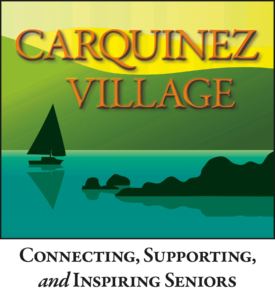By Judie Donaldson
What can you tell me about Islam? I thought that I had a little understanding through reading, but I just learned that most of what I “knew” was wrong! Fortunately, thanks to Carquinez Village, I’m better informed today.
Every month, Carquinez Village hosts an educational field trip, and last month it consisted of a visit to the Islamic Center of Vallejo. What an opportunity! All of our Village members went armed with questions.
Do you know where the Islamic Center is? I had no idea. It’s in the Glen Cove area, on Thomas Street, close to the 780 exit. It’s a large, beautiful building that can accommodate 600 congregants. It is one of 50 mosques in the greater Bay area.
Most everyone in our group had researched how to dress. Both women and men have guidelines. The purpose is modesty. For men, long pants are appropriate. In addition, they are not allowed to wear gold or leave some areas of their body uncovered. Women are to wear long pants or full-length skirts, long sleeves, and covered hair. The women in our group covered their heads with scarfs as a gesture of respect. In preparing to visit a mosque, it is also important to know that Muslims don’t shake hands with the members of the opposite gender.
We received a warm welcome from eight representatives of the mosque, including the Imam, the spiritual leader. They were eager to tell us about their religion and religious life. First, we learned that less than 20 percent of the world’s 1.2 billion Muslims live in the Arabic-speaking world. The country with the largest Muslim population is Indonesia. What a surprise! I was way off on that.
If you’re like me, you probably know that Muslims pray five times a day. We were fortunate to be in the mosque when a young Muslim man sang the call to prayer. It was elegantly beautiful. Not all Muslims can go to the Mosque to pray every day. They pray wherever they are. About 40 percent of Muslims say that they pray is a mosque at least once a week. Many attend a special prayer and sermon service (Jum’ah) that is held each Friday.
Our hosts gave each of us a copy of the Qur’an, the sacred Islamic text. It contains God’s words (Allah) that were revealed to the Prophet Muhammed who, in turn, memorized them and passed them along. This occurred fourteen centuries ago. Today, it’s not unusual to find 12-year-olds who have memorized the Qur’an as well. Isn’t that amazing?
We learned that the Qur’an outlines the “Five Pillars of Islam,” which form the framework for a Muslim’s life. They consist of: 1) acceptance of Allah and his Prophet Muhammad, 2) praying five times a day, 3) supporting the needy, 4) fasting from dawn until sundown during the month of Ramadan, and, if possible, 5) once in a lifetime making a pilgrimage (a Hajj) to Mecca, a city in southwest Saudi Arabia that is considered Islam’s most holy city. I was most impressed with the Islamic commitment to serve the needy. They believe in tithing a percentage of their income as do some Christians. One of our hosts shared how this principle comes to life in an experiential way. If he learns of a family who lives near the mosque who is experiencing difficulty, it is his responsibility to see what he can do to help. What an admirable guide to life!
Of course, we asked questions about terrorism, jihad, and the status of women. In regard to terrorism, our hosts pointed out that innumerable passages in the Qur’an prohibit such behavior. Unfortunately, as in other religions, there are those who distort their tenets. The spiritual meaning of jihad is to struggle internally against sin. However, it can also stand for struggling against the enemies of Islam, which seems to be the justification that some use to engage in violent behavior today.
They presented a philosophy that respects women’s rights and roles (e.g, rights to work, own property, and control their income). This surprised me as many of my readings paint an oppressive picture. They explained that the reason for their separate prayer halls is that they believe that when women and men pray together, it invites distraction.
We were humbled by the warmth and quality of the women and men who hosted us. This was illustrated in many ways, but in particular when they indicated that they would like us to stay for refreshments––and the refreshments turned out to be a lunch buffet of 25 or more items!
What a field trip! Well, really, all of the Village field trips have been fascinating. For example, we have visited the Rosie the Riveter Museum and the di Rosa Preserve, and in March we are going to the Jan Shrem and Maria Manetti Shrem Museum of Art at UC Davis.
I hope that you are finding your own vehicles for learning. By the way, you can learn more about the Islamic Center by visiting www.vallejo-beniciaislamiccenter.org or be going in person. The Center warmly welcomes visitors at all times in order to foster a culture of tolerance and understanding.







Leave a Reply